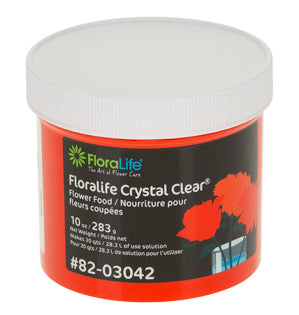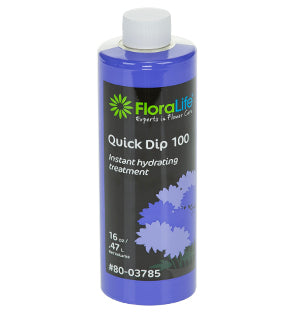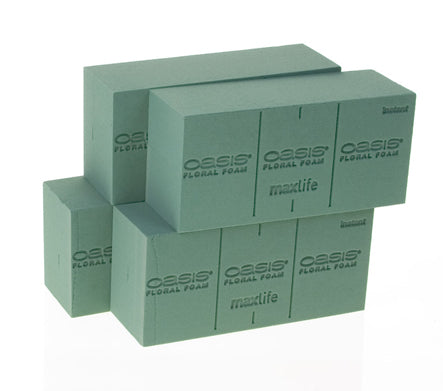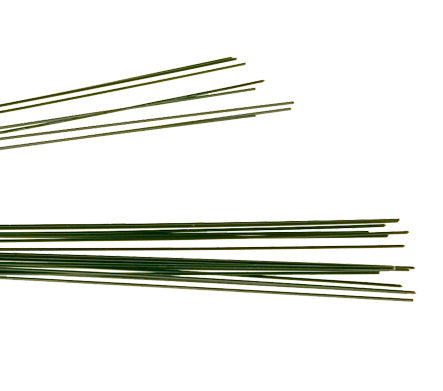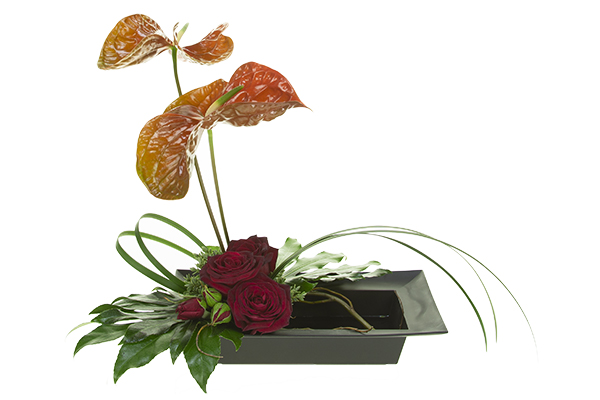
Amazing Anthuriums
A floral design can be simple and minimal yet still be bold and have striking visual impact as well. To create this dramatic linear design, Teacher Marisa Perring AIFD demonstrates a step-by-step process that expands upon the elements and principles of floral design and utilizes some unique design mechanics too.
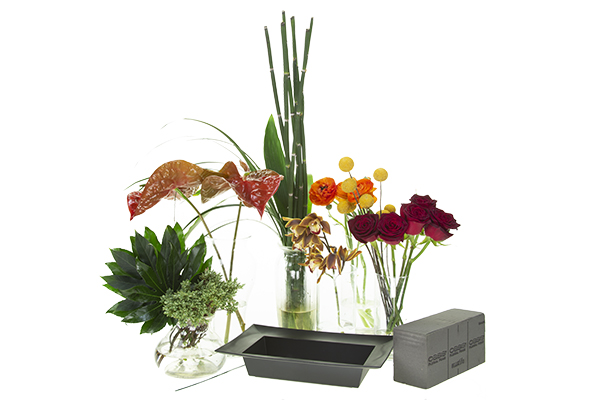
STEP ONE:
Materials: A contemporary low rectangular container, Oasis midnight foam if available (it blends into the color of the container, which lessens the need to cover mechanics), 22 gauge wire, two amazing anthuriums, and a variety of other floral materials from which to choose. Teacher Marisa selects Black Baccara roses, fatsia leaves, lily grass, boxwood, and curly willow to complement her amazing anthuriums.
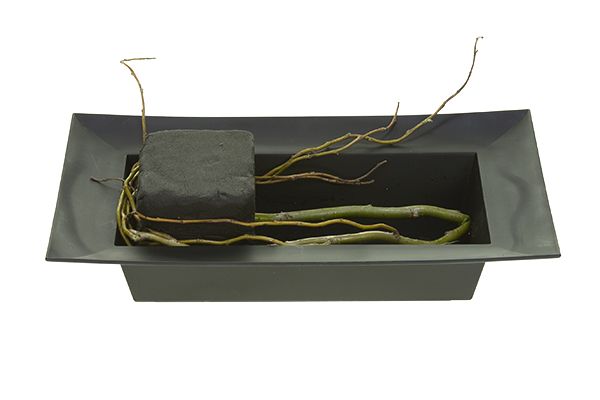
STEP TWO:
To embrace negative space in the container, use one third (1/3) brick of Oasis midnight foam and place it asymmetrically on one side to support the form of the design. Bend the curly willow and use it to wedge the foam into place on one end of the container. The curly willow provides an alternate mechanic that stabilizes the foam, and demonstrates a creative technique that builds interest in the design
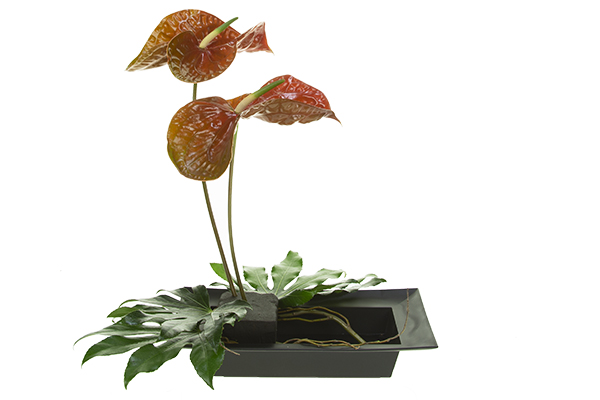
STEP THREE:
The amazing anthuriums are the most dominant feature, and they become a strong focal in the design. To highlight their beauty, keep them at full length to create scale and maximum visual impact. Group the flowers together and shadow their placements, following their natural curve to create a strong defined line.
Layer one small and one medium fatsia leaf in the left corner to create some visual weight that balances against the anthuriums.
Keep that wonderful mechanic of curly willow with negative space visible on the lower right side. Add one more fatsia leaf towards the back for even more balance in the design, and to draw the eye all the way through to the other side.
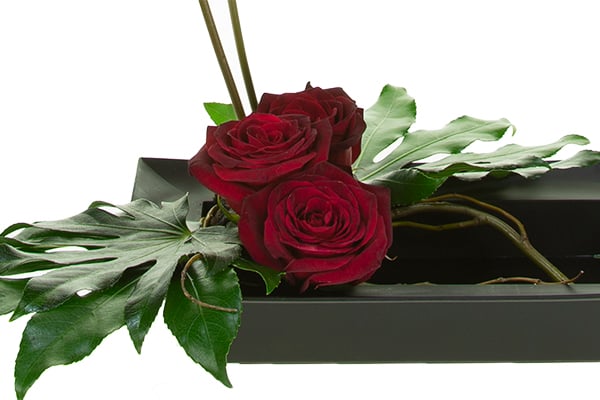
STEP FOUR:
Basing the Black Baccara roses works beautifully. Terrace the roses from front to back to create line, depth and movement in the design.
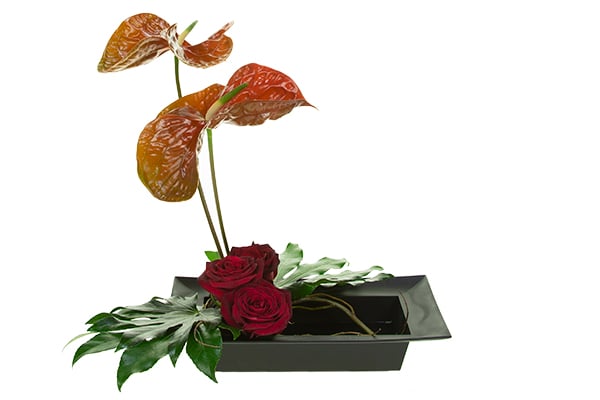
STEP FIVE:
The Black Baccara roses have a deep color density that unifies the red hue from top to bottom in the design, and they add additional visual weight to counterbalance the anthuriums.
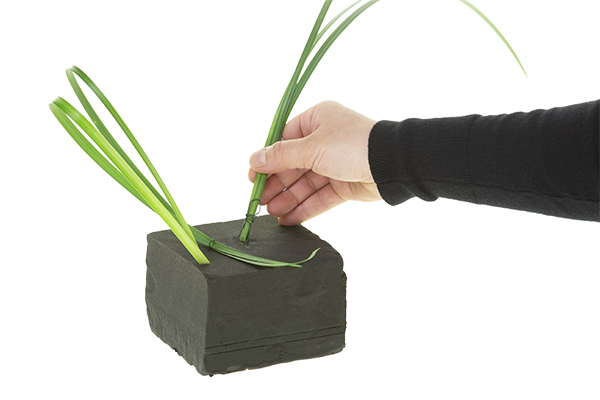
STEP SIX:
Prepare the lily grass for insertion. Use a 22 gauge wire to secure the ends of the lily grass into the foam. The hair pin technique works well for this process. The clutch wrap is another technique that can be used when inserting multiple strands of grass because it keeps their placements neat and tidy.
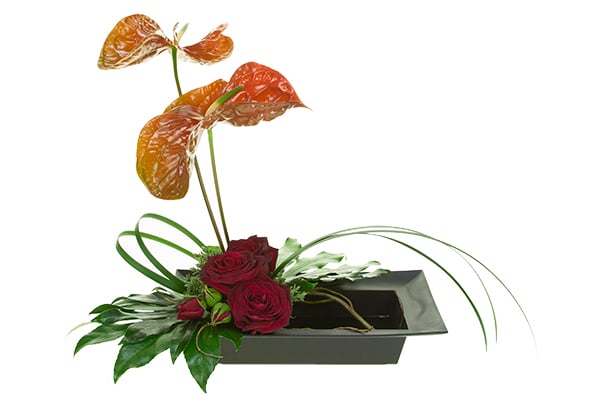
STEP SEVEN:
The final step is to cover the mechanics, and using lily grass is an interesting way to do that. Add a couple of lily grass loops to the back of the container for dynamic line. A few more loops placed naturally on the right side will help unify the design. Extra lily grass spaced throughout adds even more line, balance, rhythm, and scale. A few buds from the roses add contrast, and the boxwood brings texture to the finished design.
Thank you to FDI instructor Marisa Perring AIFD for this gorgeous design featuring amazing anthuriums. If you would like to learn more, join us in the Classroom or Online and study the theories and techniques of design with the Floral Design Institute Teachers.


